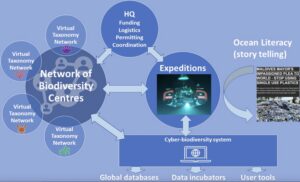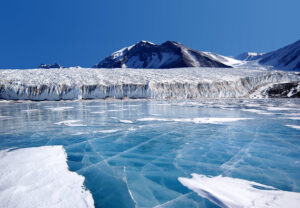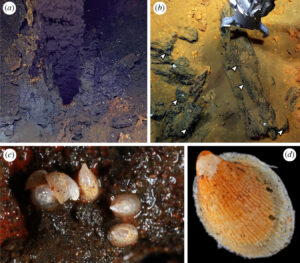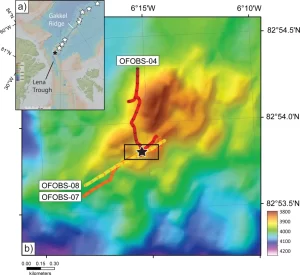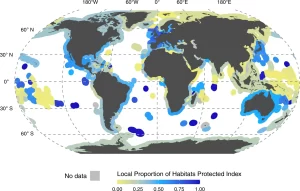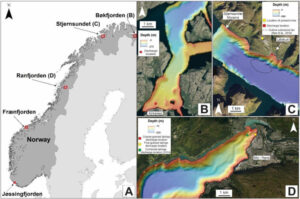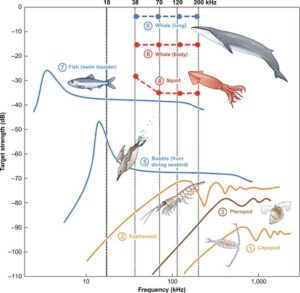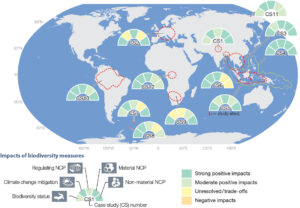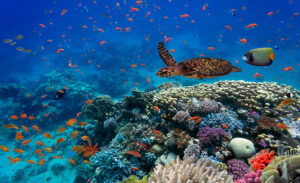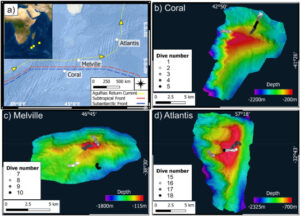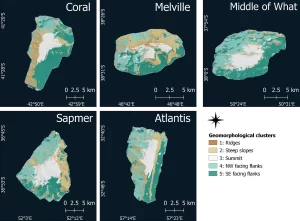REV Ocean authored research papers
.
.
.
We describe a strategy to accelerate the rate of ocean species discovery by: 1) employing consistent standards for digitisation of species data to broaden access to biodiversity knowledge and enabling cybertaxonomy; 2) establishing new working practices and adopting advanced technologies to accelerate taxonomy; 3) building the capacity of stakeholders to undertake taxonomic and biodiversity research and capacity development, especially targeted at low- and middle-income countries (LMICs) so they can better assess and manage life in their waters and contribute to global biodiversity knowledge; and 4) increasing observational coverage on dedicated expeditions.
The Southern Ocean, which comprises ∼10% of the global ocean, is critically important to the homeostasis of the Earth system, exhibits distinctive marine biodiversity, and has tremendous scientific, diplomatic, and wilderness value.
Integrative taxonomy of a new cocculinid limpet dominating the Aurora Vent Field in the central Arctic ocean.
Deep-sea hydrothermal vents host lush chemosynthetic communities, dominated by endemic fauna that cannot live in other ecosystems. Despite over 500 active vents found worldwide, the Arctic has remained a little-studied piece of vent biogeography.
The hydrothermal plume emanating from Aurora exhibits much higher dissolved CH4/Mn values than typical basalt-hosted hydrothermal systems and, instead, closely resembles those of high-temperature ultramafic-influenced vents at slow-spreading ridges.
These indexes are helpful to monitor aspects of the Sustainable Development Goal 14 and the emerging post-2020 global biodiversity framework, to understand the current status of international cooperation on coastal and marine habitats conservation.
We synthesize the results of a multidisciplinary programme on environmental impacts of STDs in Norwegian fjords, providing new knowledge that can be applied to assess and mitigate impact of tailing disposal globally, both for submarine and deep-sea activities.
Discovering marine biodiversity in the 21st Century.
We review the current knowledge of the biodiversity of the ocean as well as the levels of decline and threat for species and habitats. The lack of understanding of the distribution of life in the ocean is identified as a significant barrier to restoring its biodiversity and health.
Actions to halt biodiversity loss generally benefit the climate.
This review aims to re-emphasize the vital relationships between biodiversity conservation actions and climate change mitigation in a timely manner, in support to major Conferences of Parties that are about to negotiate strategic frameworks and international goals for the decades to come.
How do we best synergise climate mitigation actions to co-benefit biodiversity?
In this review paper, we first discuss various climate mitigation actions that evidence demonstrates can negatively impact biodiversity, resulting in unseen and unintended negative consequences. We then examine climate mitigation actions that co-deliver biodiversity and societal benefits.
Seamount seascape composition and configuration shape Southwest Indian Ridge fish assemblages.
This study examines how multiscale seabed spatial heterogeneity influences commercially important fish families at three Southwest Indian Ridge seamounts (Coral Seamount, Melville Bank and Atlantis Bank).
This study aimed to map, quantify and compare seamount seascapes to test whether individual habitats and seamounts differ in geomorphological structuring, and to identify spatial pattern metrics useful to discriminate between habitats and seamounts.
